Advertisement
PARKS! Part 2: The internet’s slime guy
Resume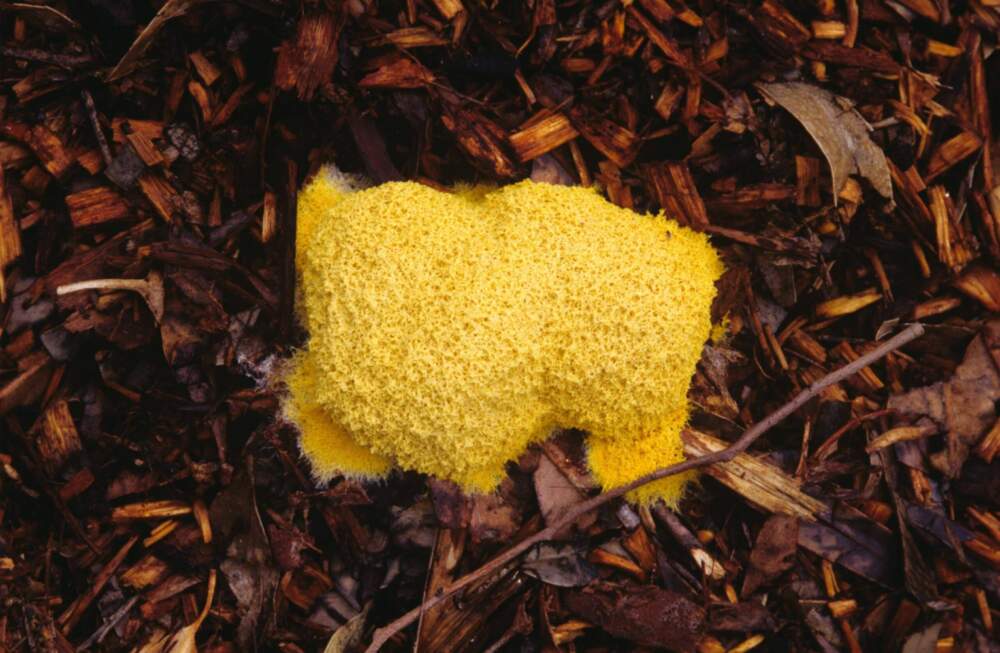
A few years ago, Matt came across a curious creature resembling a mushroom. It was red, gross, and spectacular. But when he searched for more information, he discovered it wasn't a fungus. Nor was it a plant or animal. It was a slime mold.
Slime molds are single-celled organisms that come in many shapes and sizes — some look like pretzels, some like tiny iridescent balloons, some like scrambled eggs. (Despite the name, they are not molds, either.)
Matt became enthralled. In two years, he learned all he could about slimes and shared his learning with the internet, where he became popular on Reddit for his ability to identify slimes. But popularity sometimes comes with a price.
Endless Thread co-host's Ben Brock Johnson and Amory Sivertson take a walk in the woods with Matt and learn about slime molds and how they have shaped his life.
Show notes
- Matt's Beginner's Guide to Slime
- Matt's Patreon
- True Facts: The Smartest Slime (Ze Frank)
Full Transcript:
This content was originally created for audio. The transcript has been edited from our original script for clarity. Heads up that some elements (i.e. music, sound effects, tone) are harder to translate to text.
Matt: This is Millers Pond, and it is a delight. This is one of my favorite parks in Connecticut.
Ben Brock Johnson: How come?
Matt: I mean, I hate to be so stereotypical already, but it's just full of slime molds. I found so many slime molds here.
Amory Sivertson: Earlier this summer, Ben and I went for a walk in the woods.
Ben: Our guide Matt has a unique hobby: He loves to search for slime.
Matt: You have to get your mind into the mode.
Ben: The slime mind.
Matt: Yeah.
Amory: I came with my slime mind fired up.
Amory: Slime, as in slime mold. A curious creature that, I don't know, lurks? Oozes? Whatever, it lives just about everywhere. And yet, slimes aren't the easiest things to find if you don't know how to look for them.
Matt: If you're just, you know, tromping through the woods, you know, getting your exercise, you won't see them. You have to be aware and observing and in nature and thinking about nature.
Ben: Matt is very in touch with nature. He's also a web guy. Known to the internet as...
Matt: My name's Regular Slime Guy.
Ben: Regular Slime Guy!
Amory: There is nothing regular about Matt, though. Because many, many, many Redditors consider him to be the online sage of slime molds. Got a question about slime?
Ben: Call Regular Slime Guy!
Amory: Yeah, Matt's the guy to trust. Because...
Matt: The most important thing to know about learning about slimes on the internet is that a lot of information is wrong.
Ben: And no, he's not a scientist. He's a slime-atist.
Matt: I wouldn't call myself an expert. I wouldn't trust anyone who calls himself an expert, to be honest. I think that sometimes people decide that they're done learning. Not a fan of that. I think you gotta just keep going, going and going and going.
Ben: You're a slime mold fan.
Matt: I would say I'm an enthusiast. I would say I'm a teacher. I do try to teach. I try to share everything I have.
Ben: This is the story of how Matt, a.k.a. Regular Slime Guy, shared his slime mind with the online world, how he became the sage of slime, and what happened after his notoriety started to fruit. Spoiler alert, this story is not without controversy.
Amory: But before we get there, you may still be wondering: What the hell is a slime mold? Well, dear listener, that is what we went to find out in a Connecticut State Park overflowing with secret slime.
I'm Amory Sivertson. Slimertson.
Ben: There we go. I'm Ben Fruiting Johnson, and you're listening to Endless Thread.
Amory: We're oozing to you from WBUR, Boston's NPR station.
Ben: Today's episode, the second in our Parks Series about the outdoors online, this is...
Amory and Ben: SLIME MIND!
Ben: Say slime to just about anyone, and, chances are, the thing that comes to mind is either...
[Clip of someone being slimed on Nickelodeon.]
Amory: ...slime time on Nickelodeon.
Ben: Or Slimer from Ghostbusters.
[Clip from Ghostbusters.]
Amory: Or that movie The Blob...
[Clip from The Blob.
Steve: It's kinda like a mass. It keeps getting bigger and bigger.
Cop: Come on, Steve. Make sense.]
Amory: That's not really what we're talking about when we talk slime molds. If you go to Reddit and look for r/Slimemolds, the subreddit, you'll learn pretty quickly that these things are weirder than anything Hollywood could dream up. Single-celled organisms that are at once beautiful and disgusting.
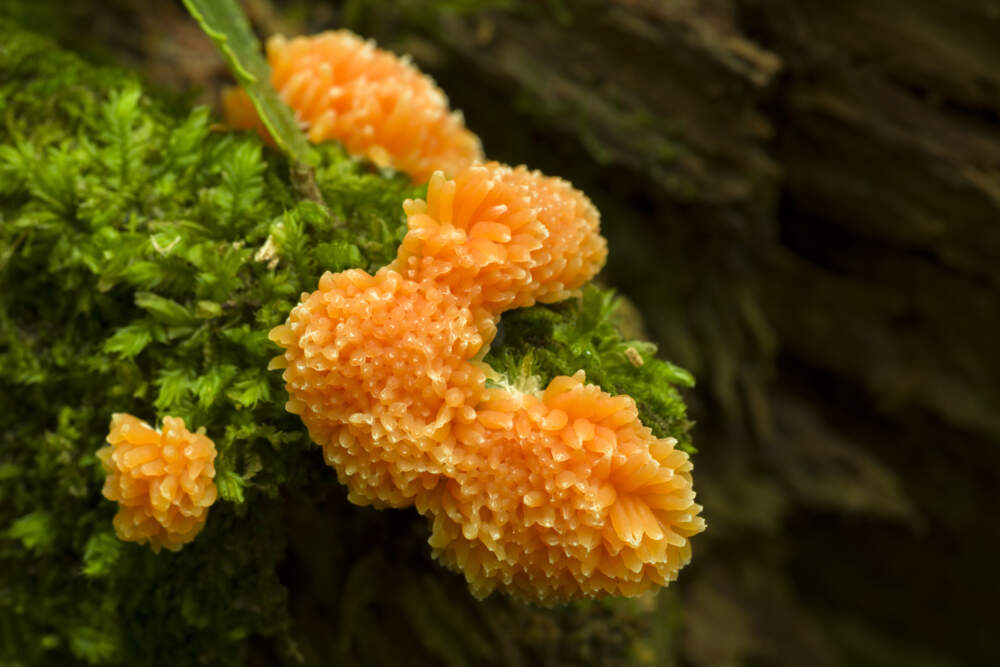
Ben: One individual slime mold cell can be tiny, just barely bigger than a bacteria, or less tiny, like the size of a college dorm room. Again, that's one cell. Our bodies have 30 trillion cells.
Amory: Slime molds can have stalks like plants. They can move like animals. They can be pink or yellow or clear or iridescent. And, like with fungus, they reproduce by dispersing spores. They also sort of look like fungus, which can fool people like our producer Dean Russell when he saw what he assumed was slime.
Dean Russell: It just looks like a couple of Dippin' Dots that are beige.
Matt: Yeah, this is a fungus.
Dean: A fungus, OK.
Matt: Yeah.
Ben: Way to be a slime noob, Dean.
Amory: At least he's a fun guy.
Ben: Ugh.
Amory: So, bacteria, plant, animal, fungus? Slime molds are none of these things. They're not even molds. On the tree of life, they are their own thing.
Ben: Their own slimy branch. And on the list of things to get excited about, you could definitely call them an underdog. Maybe for a reason.
Amory: Oh, our first slime mold.
Matt: There it is. It's dramatically orange.
Amory: To me, this just looks like something took a poop. And then something took a smaller poop next to it.
Matt: Yeah. It does look like that. Yeah.
Amory: And they were a little orange around the side like maybe they—
Dean: They ate a lot of Cheetos.
Amory: They ate a lot of Cheetos.
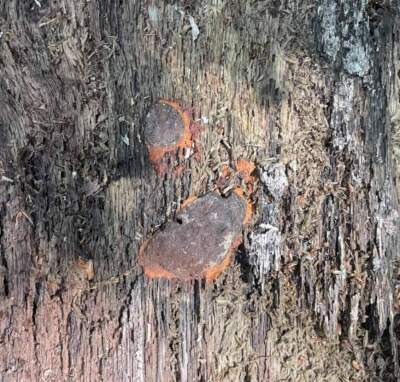
Ben: Our guide Matt — we're only using his first name for reasons that will become apparent later — Matt showed us our first-ever slime mold about 10 feet from the Millers Pond State Park parking lot.
Amory: It was on a rotten log and about the size of a silver dollar. (Or a pop socket for you young spring chickens.) It was brown with a thin outline of bright orange. And on the inside?
Matt: Yeah. Just go for it, man. See what's in there.
Ben: It feels like powdered chocolate.
Dean: He's poking it right now.
Ben: I'm poking it with a stick.
Matt: So if you go deep enough, you'll see yellow, and that's the fuligorubin A. That's what that is.
Ben: Should I eat it?
Matt: I wouldn't eat that. No. It's not edible right now. If we find one that's edible, I'll tell you, and we'll all have it. We'll try it out. I've eaten some slimes.
Amory: Please note that I did not have the immediate impulse to poke and eat the slime.
Ben: Hey, that's why you got me around. That's why they pay me the medium bucks.
Amory: Anyway, this little guy is called a Fuligo septica, otherwise known as the scrambled egg slime or dog vomit slime or, as Matt prefers, the loofah, because it has a strange, spongy texture. The one we were looking at was at the point in its life cycle where it was releasing spores. Little baby slimes.
Matt: This was a single cell, and it was living in the wood and moving around. Like, mobile. It's not like a fungus. It doesn't stay where it is. It actually literally moves around.
Amory: And when he says it moves...
Matt: I went on a three-hour hike once, and when we came back, it had moved over a leaf. They're slow, they're slower than you, but they are always moving.
Ben: Moving slime! Good luck with all that nightmare fuel, everybody.
Matt may be slime's biggest advocate. And he told us slimes have taught him a lot about how to live.
Matt: My whole life is a crossover with slime. I relate to slimes.
Amory: But he didn't start out that way.
Ben: Do you have a slime-mold-in-your-life origin story?
Matt: Yeah, absolutely. I do. I do. I hope we see it today. We may see it today. That would be really exciting. Probably not. The particular variety I saw was extra special.
Ben: It was 2018. Matt was in his mid-thirties. Living in Connecticut. And life? Well, life was not exactly peachy.
Matt: I talk about this a lot on Reddit. I'll talk about it a little. I have endogen— I mean, I have a lot of things, but I have endogenous depression. And it sounds like depression, and it has similar symptoms to depression, but none of the medicines that treat not-endogenous depression do anything for endogenous depression. So it's kind of an unhelpful term.
Amory: Endogenous depression is often referred to as biological or genetic depression. It has no apparent outside cause like stress or trauma. And, if you have it, the feeling can be hard to escape.
Matt: I was trying to sleep like 15 hours a day, you know? I didn't wanna be awake. I wanted to be dead. But, you know, being dead is a statistically bad call, right? Because your chances are greater than zero, but then when you're dead, your chances are zero. It's kind of an easy mathematical decision, you know?
Ben: You're not acting like slime if you want to be dead.
Matt: Yeah, very true. Slimes never try to be dead. They do everything they can to the point of absurdity. I mean, they literally live under ice. They live in the ocean inside of sea urchins.
Ben: Sea urchin slime!
Amory: At the time, Matt still had no idea slimes lived in sea urchins. Or that they even existed. And his depression was crushing — and just a brief note to say, if you're having similar feelings, there's a new national hotline you can call for help. It’s 988.
Ben: Matt had been through countless treatments by then. Medications, shock therapy, cognitive behavioral therapy. But one day, his doctor suggested a new medication.
Matt: So there was something wrong, right? Like my brain just couldn't operate. And when I take the medicine, that goes away forever. It's gone. I haven't felt like that. It was literally like a switch flipping, literally like one day I was depressed, and then about two weeks after I was on my current dose, I just suddenly was not depressed. We were sitting on the couch, I remember it. I was like, "I'm not depressed anymore. I'm just happy."
Ben: This was monumental. It was like emerging from the Upside Down. But it wasn't just medication that helped Matt. Because, at the time, he had had a picture saved on his phone. It was something he saw while on a hike, something that looked like a mushroom. And for some reason, it grabbed his attention.
Matt: And I was like, why is this so red? And then I got closer, and I was like, what is this?
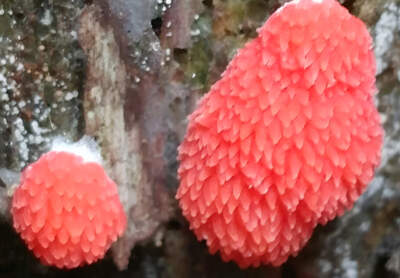
Amory: Matt suddenly needed to know more. So he dug out one of his wife's nature books.
Matt: And then when I looked it up, it was like, not a mushroom, it was not a fungus, it was something else. And I started looking into it, and I was like, what does that even mean? Like, what do you mean it's not a fungus?
Ben: It was a slime. Matt became enthralled. Like, this was a whole new branch of the evolutionary tree — a slimy branch — that no one had told him about. And he wanted to know more, so he went to Google. But...
Matt: I wasn't really getting a lot of answers anywhere. But I knew on Reddit, Reddit's kind of a place where anyone can say anything to a certain extent. So I went, and I just was looking to see if there was anybody there.
Amory: Matt signed up for Reddit with the username SaddestOfBoys. And he realized that Reddit is a great place to go if you have a picture of something that you need help identifying: a leaf, a rock, a mushroom, that weird brown thing you found in a cereal box. And while the information on slime molds was pretty limited, there were a few Redditors who gave Matt some starter links.
Matt: I just started reading, and I would say for the past two years I've been reading or looking for slimes or asking people questions about slimes every day.
Ben: Matt attributes this obsession, in part, to the fact that he is autistic. But even so, it's easy to forget that his life of slime only started two years ago. Mostly because he says things like:
Matt: You can even see the hypothallus. Look! Oh, yeah!
And uses words like:
Matt: Fuligo septica / Brefeldia / Arcyria / Fuligo septica / protosporangiids / Ceratiomyxa / Reticularia lycoperdon / Kelleromyxa fimicola / acutissima / Stemonaria longa
Amory: But that's the thing about Matt. He just likes to learn. And, pretty soon, his passion for slimes, it would start to get noticed online.
Amory: You became the slime guy. People would tag you right when they saw—
Matt: Oh, yeah. They still tagged me.
Ben: But not all slimes fare well in the sunshine. More on that in a minute.
[SPONSOR BREAK]
Amory: We moved pretty slowly through this Connecticut State Park, keeping our eyes peeled for slimes. Matt had already scoped the place out. And after a bit of chatting by slime number one, he took us to slime number two.
Matt: So what happened was this thing emerged from the wood, and it looked like, hmm, frosting?
Amory: This one was called Stemonitis.
Matt: So it came out, and then it formed a whole bunch of bubbles, and the bubbles pulsed really creepy. I'll show you a video of this at some point. And then the bubbles raised up in the air, and they made these little brown sort of like burnt corn dogs. And then they manufactured the black stalk, which sort of looks like an eyelash inside of their body.
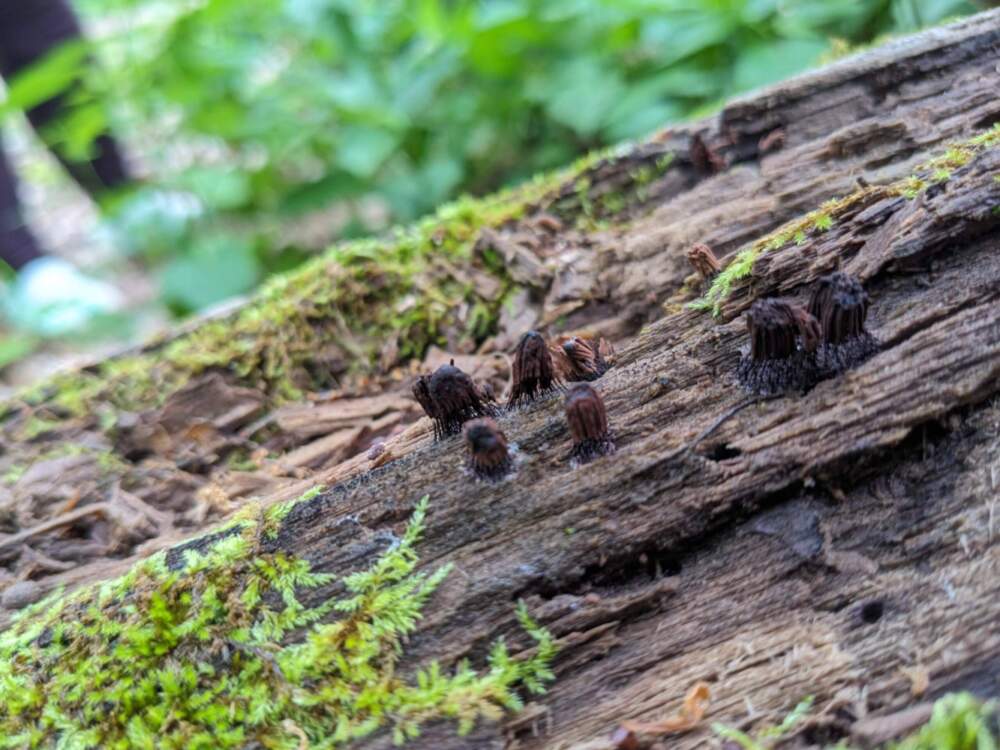
Ben: Imagine a handful of burned corn dogs, shrunk to a few millimeters tall and plugged into an old wet piece of wood. Pretty cool, right?
Amory: Well, just wait until you hear about slime number three! Hemitrichia calyculata!
Amory: It's like the littlest balloon. The littlest grayish-white balloon.

Ben: Matt tells us that slimes can live all over the place: in the soil, the ocean, the desert. And don't forget...
Matt: I never finished telling you about the butt.
Amory: No, I was gonna ask.
Matt: They're in your butt. I mean, I don't know how many of them are in your butt. I suspect that they're in everybody's butt. But...
Amory: But...
Ben: But...even more interesting to Matt is what they do.
Matt: They do problem-solve. They do things that don't really make sense without a brain, but they do them anyway.
Amory: Case in point, even though slime molds are under-studied, scientists have run experiments and found that some slime molds can solve mazes. Like, put the mold at one end of the maze, some yummy bits of bacteria or protozoa or something at the other end, and voilà! Maze solved.
Ben: Also...
Matt: If something bad is happening on a regular basis, they'll anticipate it. They'll remember that it happened, and they'll somehow time out when it's gonna happen next, and then they'll prepare.
Ben: These blobby guys can even exchange knowledge. For instance, many slimes don't like salt. But if one slime learns to adjust to an extra salty surface, it can bump into another slime and tell it ...
Amory: "Psst. Hey. That salt over there? It's not so bad."
Ben: There's even this famous experiment where scientists put slime on a map of Japan. Then they put food on top of all the major cities. And they watched the slime stretch out to create a giant network of connections. A network that looked exactly like Japan's actual train system.
Matt: And those connections were at the same efficiency level as the actual transportation network devised by thousands of engineers who have studied in schools for years.
Amory: These are the types of things Matt was learning and sharing online. He became particularly good at identifying pictures of slimes.
Matt: I made a custom feed of compost subreddits, gardening subreddits, aquarium subreddits, and I would just go online, and I would look at these feeds, and then people would be like, what is this?
Ben: Slimes are not heavily studied. In fact, for the longest time, science miscategorized them as fungus. And there's still a lot we don't know.
So Matt developed what he called a "wall of text." A copypasta, if you will. A beginner's guide to slime that says this is what slime is; this is its life cycle; this is what it eats; no, it's not toxic.
Matt: And I just like the idea of giving people things you know, because you don't lose anything, but they gain a lot, and then you can feel good about it. It's nice, and it's better when people know more.
Amory: Matt says he was working at a factory at the time, and he is currently between jobs. But being a slime-atist on Reddit was also like a full-time job.
Ben: He eventually updated his Reddit display name and became Regular Slime Guy. And whenever people wanted his help IDing a photo, he'd get tagged with a slime signal. Then he'd respond: "SLIME SIGNAL RECEIVED."
Matt: I would say after two years, the expertise level on Reddit went up significantly. I saw people coming in and just identifying things that never would've been identified before. There are very few threads now, I would say, where someone posts a slime, and everyone in the thread is just wrong or confused. There's always a couple people now who come in. And I'm not gonna take credit for that all by myself, but it was probably me.
Amory: Matt has a kind of charming wink-and-swagger. Not afraid to say what he thinks — mostly about slime — and not afraid to admit when he's wrong. You get the impression that he just likes knowledge. Giving it, receiving it. Whatever. But maybe not everyone saw it that way. Maybe that's why things started to take a turn on Reddit.
Matt: I'm banned for most of Reddit, fungi-wise, so I can't even answer them anymore, but they still—
Amory: And why is that?
Matt: They still tag me. I upset one of the mods, and they just had a kind of stereotypical meltdown over it.
Ben: This all gets very in the weeds (or, in the cytoplasm, you might say), so here's the gist. Over a year ago, Matt privately questioned an r/Slimemold mod for banning another user. The mod conversation turned into an argument, which, Matt says, turned into harassment.
Matt: And at that point, they just decided that they were gonna do what they could to make me miserable. And they have done so.
Amory: On a different sub, r/mycology, for mushrooms, the mods began removing certain posts related to Matt. That mod team wouldn't agree to speak with us, but they sent us a long message. They said that Matt's comments were helpful because slime molds are often confused for mushrooms. But his popularity became an issue when users began posting too many slime-signal comments on the same post. To the mods, this verged on spam, so they removed the extraneous slime-signal comments. Matt says they were removing a lot more than that.
Ben: Because removed comments are, by definition, no longer there, we can't verify either claim. We have seen messages in which a mod told Matt that they "started to cut down on the slime mold stuff" and emphasized that slime molds are not fungi, and thus "OFF TOPIC."
Amory: The mods told us they reached out to Matt to tell him what they were up to and that Matt responded with hostility. Matt says it was the other way around. Again, we don't have full records, so it's hard to say definitively.
Ben: Matt saw these two things — the public content removals and private alleged harassment — as related. This could be because the mod that Matt accuses of harassment told him, "If you are trying to get away from seeing me on reddit, good luck with that, I have numerous accounts." This same mod would later go on to publicly question Matt's mental health...
Matt: He's insane. He's delusional. Whatever.
Ben: And accuse Matt of using Reddit for "inflating his Patreon" account, where he makes money.
Matt: Which I do have a Patreon, and I do not get a ton of money on it, but it makes a big difference, I will say. But I usually tell people not to pay me.
Amory: That mod didn’t want us to use his real name for fear of being harassed. But he told us on the phone that he didn’t remember making public comments about Matt’s mental health or financial motivations. He, the mod, did say that he can be abrasive, which he attributed to his being on the autism spectrum, similar to Matt. He also said that Matt was a valuable contributor to r/slimemolds.
Matt later publicly posted about what he believed was happening, and this whole thing blew up. He included a list of who he said were his aggressors and screenshots of several private messages. The mycology mods told us that was not okay, and that one of those mods was later harassed by a Regular-Slime-Guy fan at work. Again, we can’t verify that.
Ben: Matt says he was banned and felt attacked. In one post, he wrote, "The Slime Signal is Dead." For many people who watched the slime mold community develop, it was a sad thing to see.
Amory: It was sad for Matt too. He says being Regular Slime Guy was a lot of work. But he got a lot of joy from sharing information. Why?
Matt: Because people who don't get that from anybody can get that from me, and it costs me nothing. I've had a lot of people specifically tell me that they teach their kids about science, they learn about science together because I saw your stuff on the Reddit, and so I talked about it with my kid, and that's kind of where we went with it. And I've had other people who were like, oh, I'm gonna study them now because you kind of piqued my interest. And even just one person, I think, makes my entire life worthwhile.
Ben: One of the last slimes we visited was the same species as the one we started with.
Matt: It's just a regular old Fuligo septica.
Ben: Regular old Fuligo septica.
Amory: And even though we thought Matt had told us everything we needed to know about regular Fuligo septica, he is just bursting with fun facts.
Matt: The Blob in the '50s was based on an incident where Fuligo septica, I believe, was found on somebody's yard in massive amounts and they were like, "Oh God, it's aliens!" But like, no, it's just amoebas, and they live in this soil. They've just been there the whole time. You just didn't notice.
Ben: That's amazing that The Blob, the movie, is literally based on the slime mold that we're standing next to right now.
Ben: Matt had a few similar spats on Facebook and the app iNaturalist. But he's not offline. He's on Patreon, and he has been dabbling with the idea of a YouTube channel. And he still actually uses Reddit, just far less frequently. Almost all of his comments are answering people that find strange things growing in their house that look like the Blob. But...
Amory: But...
Ben: But, really, Matt's happy place is here, in the outdoors. So if you really want to know more about slimes, you could just go for a walk in your local park, look for some rotten logs and see what's there.
Amory: Oh, and there's one very important thing we have to mention.
Matt: Are you gonna listen to my rap song?
Ben: Matt has decided to make a hip-hop album dedicated to slime mold. He says it's one more way to spread the word about slimes. And a way to find out more about them.
Matt: The thing is, once the rap music comes out, of course, I'll be the most famous rapper on Earth, and then I'll be able to buy the equipment I need to do the experiments I'd like to do.
Amory: After our walk in the woods, we all gathered around Matt's car, where he cued up a rough cut of his latest track. And wow, if Matt is right about one thing, it is that his music is incredible.
Matt (rapping): Stemonaria longa: fierce out the box
hanging off the tree, down the bark, like a filthy mop
or doing crime on the various fungus
melting the mycelium & raising a ruckus
once the massacre begins– ain't no stopping
this blob a destroyer like anti Mary Poppins
hiding in the dirt showing no quarter
plotting mycological manslaughter
when ya see a slime sliming in a grow
the habit of the fruit is how you know
when ya see em fall asleep at the table
you looking at the slumber of betrayal
with any luck you gotta Stemonitis
sitting up straight: innocent politeness
but if the cocoa tubes looking droopy
might be why the fungus getting soupy
hypothallus shiny, white, & sticky
hollow stalk, limp & corneous, laying like it's dizzy
Ben: Endless Thread is a production of WBUR in Boston.
Amory: This episode was written and produced by Dean Russell, and it's hosted by me, Amory Sivertson...
Ben: And me, Ben Brock Johnson. Mix and sound design by Emily Jankowski. The rest of our team is Quincy Walters, Grace Tatter, Matt Reed, and Paul Vaitkus.
Amory: You can find pics of our gross and beautiful slime at our website wbur.org/EndlessThread.
Ben: And next week, in Part 3 of our PARKS! series about the outdoors, online, we ask, what's in a name?
Craig Howe: Anytime you see a landmark with the word "devil" or "Satan" or "hell," it's probably a sacred site to some American Indian tribe. That's a sacred site.
Ben: Bye!
Matt (rapping): drying into tiny steppy stones & waiting
shrugging off the poison and the dryness
later waking up for fungal violence
when it's too late, then you learn the perp
lazy noodles flopping on the dirt
like a smug cat, slow blinking, full belly
can't be slimy so you might as well be jelly



